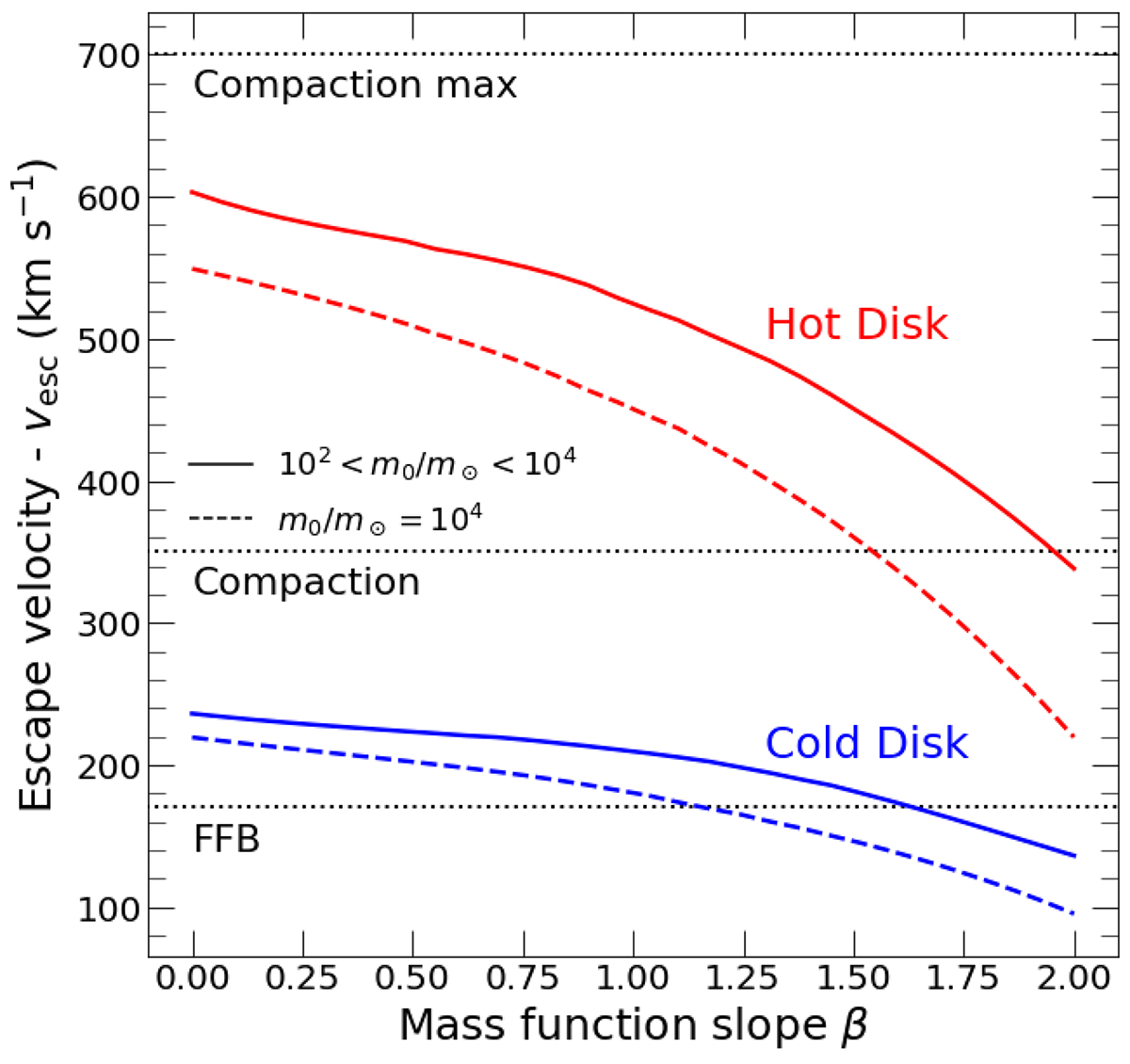Fig. 13.

Download original image
Simulation results for the the GW recoil bottleneck. Shown is the threshold escape velocity Vesc that is required for SMBH growth in at least one third of the cases as a function of the slope β of the BH mass-function ψ ∝ m−β. The blue lower curves are for cold disks, with spin-orbit misalignments θ = 0 − 10°, while the red upper curves correspond to hot disks, with θ = 0 − 30°. The solid and dashed curves refer to cases where the mass of the initial primary BH m0 is either drawn from the seed BH mass function in (102 − 104 M⊙) or selected to be 104 M⊙, respectively. The fiducial escape velocity for an FFB disk at zffb = 9 is Vesc ≃ 170 km s−1 when ignoring compaction events, and it could rise to several hundred km s−1 after compaction (horizontal dotted lines). Naturally, the required escape velocity for BH growth is lower for a steeper BH mass function. For no BH spins, or fully aligned spin and orbit, there is always growth for Vesc ≥ 100 km s−1 (not shown). For a cold disk, The fiducial Vesc ∼ 200 km s−1 of FFB is sufficient for BH growth if β ≥ 1.5 (or β ≥ 1) for a random m0 (or m0 = 104 M⊙). The bottleneck becomes more severe for a hot disk, where a non-negligible growing fraction can be obtained either with a Vesc that has been boosted by compaction events to the level of a few hundred km s−1, or with the original FFB Vesc ∼ 200 km s−1 if m0 > 3 × 104 M⊙ (not shown).
Current usage metrics show cumulative count of Article Views (full-text article views including HTML views, PDF and ePub downloads, according to the available data) and Abstracts Views on Vision4Press platform.
Data correspond to usage on the plateform after 2015. The current usage metrics is available 48-96 hours after online publication and is updated daily on week days.
Initial download of the metrics may take a while.


